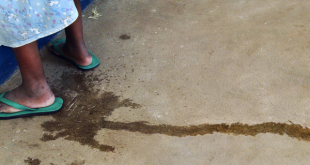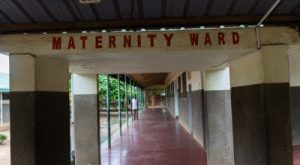
BY RICHARD DRASIMAKU
KASESE: Tuesday, February 21, 2023
While a 14-year old pupil in primary five in 1994, Julius Tumushabe got lured into poaching by peers and turned his back on school.
On his debut day, he went out into the wilderness of the sprawling Queen Elizabeth National park in a group of six youths who only carried spears and were accompanied by scrawny dogs.
The hunting expedition lasted three days in which the hunters braced the cold nights sleeping under canopies of trees in the park.
On the third day they killed a buffalo, an iconic tourist attraction of the celebrated game park.
The poachers cut the buffalo’s carcass into pieces and carried it home, where they received a hero’s welcome upon arrival at their Rwerere village in Kiremba parish, Kihihi Sub County in Kanungu district.
The youth feasted on some of the meat with their families but sold most of it using the palms of their hands as weighing scales.
Each handful of buffalo meat was sold at sh1,000 (USD$0.27) and the poachers got a total of sh20,000 (USD$5.44) from that particular kill.
An adult African Buffalo can weigh between 400kg and 870kg according to www.livescience.com and it is a near threatened species as per the International Union for Conservation of Nature (IUCN) 2018 red list.
But poaching though dangerous is a habit-forming undertaking in that, as testified by one ex-poacher, when you go once whether you come home with meat or not, you always want to go back hunting again.
As such, Tumushabe says although he felt fearful at the start, he eventually grew in confidence and ended up killing countless number of animals and birds for paltry cash and eating at home during his numerous forays into the Queen Elizabeth National park until the year 2000 when be backed off.
His harrowing tales were made during a fieldwork interface with news editors as part of a week-long training held in Kasese district under the Uganda Editors biodiversity program.

The program organized by the Infonile in partnership with the Wildlife trade monitoring network, TRAFFIC and Internews’ Earth Journalism Network brought together 20 editors from all the major regions of Uganda.
In addition to classroom training with conservation and journalism experts, the training incorporated field visits to conservation projects and natural sites to familiarize the participants with the importance of biodiversity and inspire them to conserve and restore biodiversity.
Ramweri Byaruhanga, the LC1 chairman of Kazinga Lower village, who dropped out of school in 1995 also put forward a narrative similar to that of Tumushabe. Byaruhanga disclosed that he was in P.7 at Kibimbiri primary school in Kihihi Sub County, when he saw poaching as a quick way of putting meat on the table.
“I would see people go in groups to hunt in the game park and it felt enticing. I started following them where I would carry for them snares and traps,” recounted Byaruhanga.
“Whenever they killed an animal, they rewarded me with meat. I would give some meat to be cooked at home and I sold the rest until I raised money to buy my own snares and traps,” he said.
Poverty, tradition key drivers of poaching
Both Tumushabe and Byaruhanga said that after getting married, poaching became more of a duty than a hobby as they assumed the responsibility of having to keep someone’s newly married daughter happy, feed the children and take care of the family.
Some of the reasons for poaching cited by park neighbors are poverty, human-wildlife conflict and cultural practices passed down from forbearers who hunted certain animals such as hippopotamus to feed expectant mothers believing that it would ease labour.
Allen Mgaza, an expert on wildlife trafficking and conservation attribute continuous poaching of wildlife to a number of factors including traditional medicine and beliefs- for instance the pangolin scales, the eyes, fat and claws of lions and ivory for powder; sandal wood for cosmetics and species used for pets and ornamentals.

A series of events starting from around 2000 including intensified clampdown on poachers by the rangers of the Uganda Wildlife Authority (UWA) added to the age-old incidents of poachers getting mauled by wildlife compounded to discourage many poachers including Tumushabe and Byaruhanga.
“I saw people being arrested, jailed and punished. Others got killed in the bush, so, I decided to quit in 2016,” Byaruhanga said.
Kihihi residents say they are grappling with many cases of missing poachers who went into the Game Park years ago and never returned.
However they concede that there are still hardcore poachers who do not see life without poaching because as put by Boaz Fred Niwazima, a community mobilizer in Kanungu district, “some do not have land to cultivate, many are uneducated, lazy and keep wondering how they would survive without poaching.”
Niwazima noted that while animals like antelopes and buffalo are mainly targeted to satisfy community’s cravings for game meat and for petty cash, big cats like the tree climbing lions are targeted when foreigners with connections to faraway traffickers such as in the Far East Asian countries come to convince the people to kill them.

In September 2022, the wildlife crimes court sentenced two poachers to 17 years imprisonment for poisoning lions in Queen Elizabeth National park while arrests of poachers for killing buffalos has been recorded.
UWA in a 2017-2023 community based wildlife crime prevention action plan, identified illegal hunting and trade of high value wildlife species, commercial hunting and trade of bush meat species and subsistence hunting for bush meat as priority offences posing a threat to the long-term health of wildlife population and wildlife based tourism.
Piggery and Apiary to the rescue
The general consensus in Kanungu and Rubirizi now is that the rate of poaching in Queen Elizabeth national park has reduced over the years.

This among others is said to be due to a livelihood support program implemented by the IUCN, Wild Wide Fund for Nature (WWF) and TRAFFIC, under the conserving natural capital and enhancing collaborative management of trans-boundary resources (CONNECT) program which has since 2022 supported 120 households of former poachers in four groups in Kanungu and Rubirizi districts.
These are Kameme, Rwerere, Bwambala and Kamukiri reformed poachers’ groups.
Niwazima says that the groups received 20 sows each for piggery projects and 40 bee hives per group for apiary.
On average, they harvest 3kg of comb honey per hive which is sold at sh10,000 (USD$2.71) a kilo, translating into sh1,200,000 (USD$326.39) per group in every harvest season while some of the pigs have reproduced and the piglets have been given to individual households for multiplication.

“People have learnt that you can survive on raring animals and bee keeping but we are not reaping much due to lack of knowledge and processing capacity,” he said.
He added that the projects have helped the ex-poachers to pay school fees for children, meet family needs and encourage other poachers to stop hunting in the game park.
Deusdedit Twinomugisha, the UWA’s assistant warden in charge of the Southern sector of the Queen Elizabeth National Park, without delving into the specifics, reaffirmed that community poaching has indeed declined since the intervention by conservation partners to support families of people who denounced poaching with livelihood projects.
He said to reinforce those efforts, UWA stationed wildlife scouts in every village surrounding the game park and dug a trench from Ishasha to Kamameme to prevent elephants from straying into community farmlands.

He acknowledged that the livelihood support project are still being limited by inadequate knowledge in managing piggery and apiary, high costs of feeds for the pigs and lack of equipment for processing and that there is still low level human-wildlife conflict being registered, especially during rainy season when the elephants can manage to cross the trench and that there are isolated cases of attacks of domestic animals by wildlife.
He emphasized that the reformed poachers still need a push in terms of skills training and equipment support for value addition.
A more tangible plan to construct a 33km electric fence from the Democratic Republic of Congo border to protect the communities and wildlife could be actualized in the first half of this year, Twinomugisha assured.



